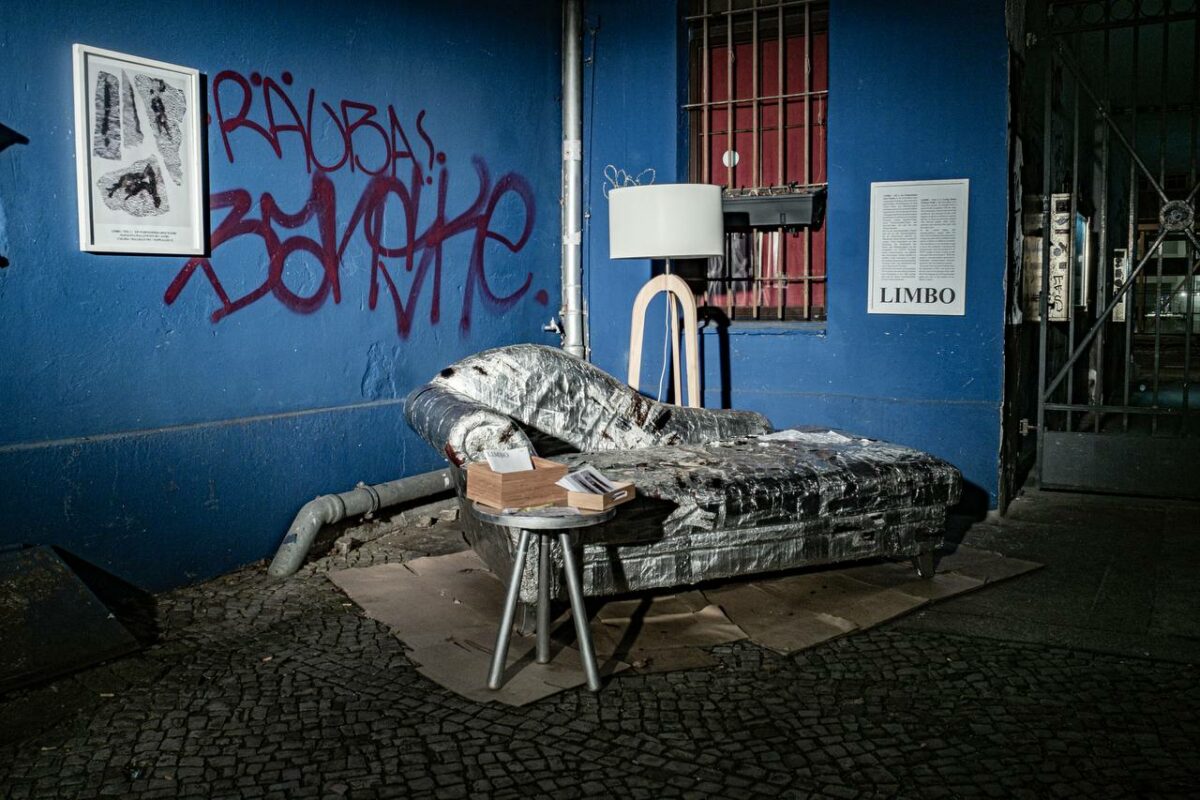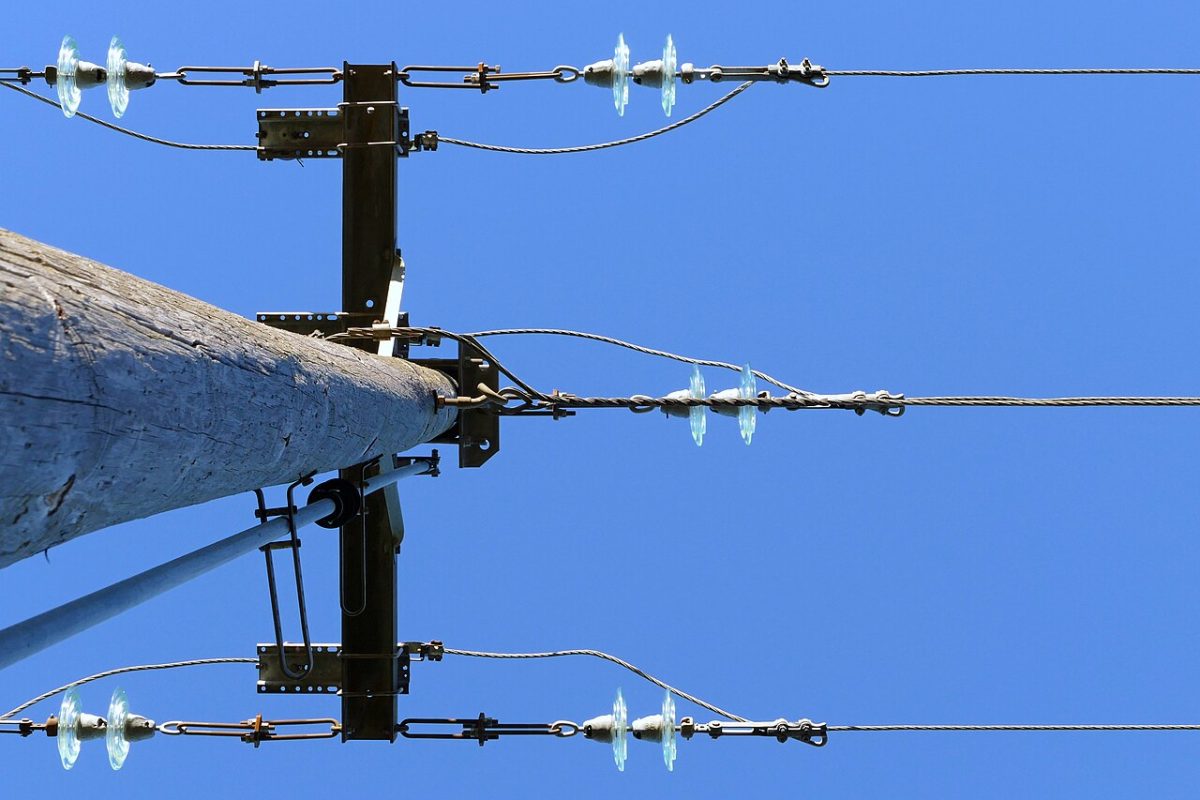Madalena Wallenstein de Castro is a Berlin artist focusing on social themes in the city, specifically the trials faced by people experiencing houselessness. Her art installation will be featured during 48h Neukölln, from the 28th – 30th of June as well at Karuna Kompass on the 6th of July. More information on the program of both events is below and you can find out more about her work at: www.madawallen.com or on her Istagram page, @wallen_de_castro.
Thematic focus of the project
This work is the result of a daily confrontation with a social problem that has bothered me for a long time because I have always lived in places where it could not be ignored. Houseless people are harshly discriminated against and become therefore invisible, which has always bothered me a lot. This was the essential impulse for me to dedicate myself to these issues with an artistic project.
Stillness – a need and a right
Berlin is probably not the place that best represents stillness. By definition, a city is a place of flurry, where billions of people simultaneously trace their paths through urban space – a moving mass that constantly flickers, a loud diversity of voices that makes the city what it is.
It is easy to get lost in this mass if you cannot find silence – it can quickly become too loud. Stillness becomes a place of longing and thus plays an essential role in urban life: it can hold up the (imaginary) walls of privacy when you need it and help you to find yourself. A place of quietness is a place of protection. Everyone has the right to this protected space, but the access to it is limited.
Apart from building houses, urban planning and architecture aims to create places where stillness can be found outside the private sphere. However, whose stillness is considered here?
Unfortunately, the urban landscape is not inclusive for everyone. When you do not have walls around you, privacy blends with public space and tranquillity remains just a desire.
Houselessness is a problem that we encounter on a daily basis, but which many of us prefer to ignore. This issue is not taken seriously politically nor socially. Often people are simply moved from place to place and forced to live in a parallel world, hidden from the rest of normality, suspended in a state of vagueness.
The reasons for houselessness, as well as that ways to deal with it, are very diverse and should not be generalised. They are structural problems caused by many factors that characterise capitalism: As a system that thrives on the ideology of productivity and economic exploitation, capitalism excludes many people who cannot cope with the strict rules of behaviour in society. Its structure is not only a form of exclusion of individuals from so-called normality, but also includes and results from a marginalisation that takes place on multiple levels. Inside an intersectional structure, factors such as gender, class or race play a very important role in this – the layered complexity of the whole issue should therefore not be lost.
FINTA* without walls
FINTA* people experiencing homelessness face additional challenges because they are oppressed by a patriarchal structure. They are highly stigmatised by a discourse of guilt, which leads to dehumanisation, and therefore they hide more and become even more invisible in everyday life than others, who do not have to face this specific oppression. So it is important that the stories and voices of unhoused FINTA* people become better known and that is why I decided to dedicate my project to them.
The term FINTA* refers to people who are discriminated against in the patriarchy. It includes all people who describe themselves as women; intersex people (possibly diverse as a registered gender); non-binary people (nonbinary, enby for short), trans and transgender people (trans men, trans women and trans non-binary people) or agender. I deliberately opted for FINT* and not FLINTA* because for me there is a difference between sexual orientation (LGB*) and gender identity (FINT*).
In conversations with affected people, I learned that, for example, daily hygiene is usually not possible, which could lead to infections. In addition, menstruating people have hardly any support for intimate hygiene products or painkillers for cramps. Again, rest and stillness also play an important role here – on the street, people who menstruate have no place to which they can retreat to recover.
For now, my project focuses on the perspectives of three women, Janet, Habibi and Janita, who accepted my invitation to work with them. As this project will be continued, my interest is to find more queer perspectives on the same theme.
Hostile architecture – a form of marginalisation
In theory, urban planning should be concerned with the development of programmes that improve the quality of life of the population in the city. This refers to spatial and social structures that take into account the needs (including the need for stillness) of all citizens.
In practice, however, the meaning of “needs of all citizens” is questionable – urban planning is still very discriminatory on many levels. A clear example of this is hostile architecture. It is designed, funded and implemented with the explicit motive of exclusion and its main aim is to produce a sense of security through social control. Its main purpose is to exclude houseless people from certain public spaces. This is achieved not only through spatial interventions such as spikes on the ground or the use of chemicals, but also through the installation of incessant music, which prevents peace and quiet in public spaces.
Yet the most common objects are benches made of unpleasant materials such as concrete or plastic, with armrests or so short that it is impossible to rest or sleep for any length of time. The formal research for the creation of the first object of this project was based on this urban phenomenon.
Addiction – a consequence of marginalisation
Addiction is one of the most obvious faces of this problem. Contrary to what many people think, it is more often a consequence than the cause of someone being unhoused. Life on the streets is hard and gets easier if one is numb. The logic behind it is that simple. Because most people cannot understand this logic, people with addiction problems are punished and criminalised, which doesn’t solve the problem at all.
According to the World Health Organisation (WHO), addiction is defined as a disease and should be treated through various methods such as therapy. Solutions can only be found by recognising the needs of addicts. Here too, social judgement mechanisms (shame and guilt) make it difficult to deal openly with the problem and drive those affected into isolation and invisibility.
Melania and The Divine Comedy
Melania has been living on the streets of Berlin for a long time and is severely addicted to drugs. She is one of the many people I meet in my everyday life, who made me start this project. We met in an underground station and through our daily contact, I discovered that she knows The Divine Comedy by heart because she often quotes parts of it in the middle of conversations.
The poetic text by Dante Alighieri tells of a journey through three otherworldly realms: hell (Inferno), purgatory (Purgatorio) and paradise (Paradiso). At the door of the infernal realm there is a place called Limbo. In classical mythology and in Dante’s poem, Limbo is located in the underworld and functions as an enclosure of hell. This is where those who have not been baptised Catholic are sent – they are punished for something for which they are actually not guilty. In other words, they are being marginalised. In the text, as an institution, the church has the power to decide to whom certain rights are applied. This reflects a logic of punishment that is so strongly characterised by the capitalist society that divides us into good and bad. For me, the logic described in the work by Dante and the logic under which many people are marginalised on a daily basis is the same, and they reflect each other.
Besides this, the term limbo also stands for concepts such as margin, oblivion, negligence or the status of obscurity and, in my opinion, describes the situation of unhoused. LIMBO has thus become the title of my work.
Aims and realisation of the project
With this project, I am trying to build bridges between unhoused people and those with a safe roof over their heads. One of the main aims of this project is to make those visible who are far too often overlooked.
The research for this work is mainly based on personal contacts with affected people, other artists, scientists and activists who deal with the topic. Networking is therefore a very important part of the work. Through interviews with different unhoused people, I try not only to better understand the problem, but also to portray the diversity of voices and faces of this problem. The interviews also play an important role in my formal research. “What should your living room look like if you had one?” is the question whose answer influences the design of my installation.
LIMBO is a long-term project that I have divided into three parts. The first part is an invitation to exchange. A place – an installation in the form of a living-room – where people can discuss the topic. The next steps of the project will be developed slowly one by one and will always be related to each other. My plans for the second and third part are still merely ideas about how the project can continue to unfold.
In the second part, I will focus more deeply on defensive architecture and try to create a critical discourse about it with various interventions in public space.
In the third part, the interviews and conversations that have been taking place continuously since the start of the project shall be used as material for a podcast. To this end, I will build a mobile booth in which recordings can be made directly on the streets.
LIMBO – Part I, A Living Room Without Walls is a room installation where one can experience many things: It depicts a living room whose walls no longer exist. The living room that does not belong to any flat – a space of stillness outside the private sphere. The idea of showing this installation on the street is to create a site-specific sense, because the work directly reflects what happens to people who live there. The main gesture here is the invitation to the public to meet us in our living room and get to know the reality of houselessness from the perspective of two affected women, Janet Amon and Habibi. With this invitation, I would above all like to facilitate communication between affected and non-affected people in order to possibly broaden the discourse on the subject.
Presentation of the project
This work will be first presented in the context of the 48h Neukölln art festival at Weichselplatz between the 28th and the 30th June. Here, the audience is invited to visit the installation and experience it in three ways: One can have an individual insight on some experiences the two women went through when living on the streets, by watching their interviews and getting to know this reality through their personal perspective – this will be possible throughout the festival, from the 28th to the 30th of June.
At the opening of the exhibition (28.06 at 19h) Janita Juvonen will be reading some parts of her book about her personal experience on the street.
On the 29th and 29th of June, at 15h, both Janet and Habibi will be present and the audience is invited to play “The Memory of The Powerful Women” with them – a game we developed together, to enable the dialogue with the audience and break the ice.
The installation will pre presented the same way a second time in cooperation with the Karuna Kompass association at the Karuna Café at Boxhagener Platz, on the 6th of July from 10h until 17h.
PRESENTATION 1
48h Neukölln // 28.-30.06
Weichselplatz
28.06
19h // Reading by Janita Juvonen 19-22h // Installation
29.06
15h-18h // Memory der Starken Frauen with Janet Amon and Habibi
14-22h // Installation 30.06
15h-18h // Memory der Starken Frauen with Janet Amon and Habibi
14-19h // Installation
PRESENTATION 2
Karuna Kompass // 06.07
Café Pavillion // Boxhagener Platz
11h // Memory der Starken Frauen with Janet Amon and Habibi
10-17h // Installation
We are glad to invite you all to join us in our living room!




